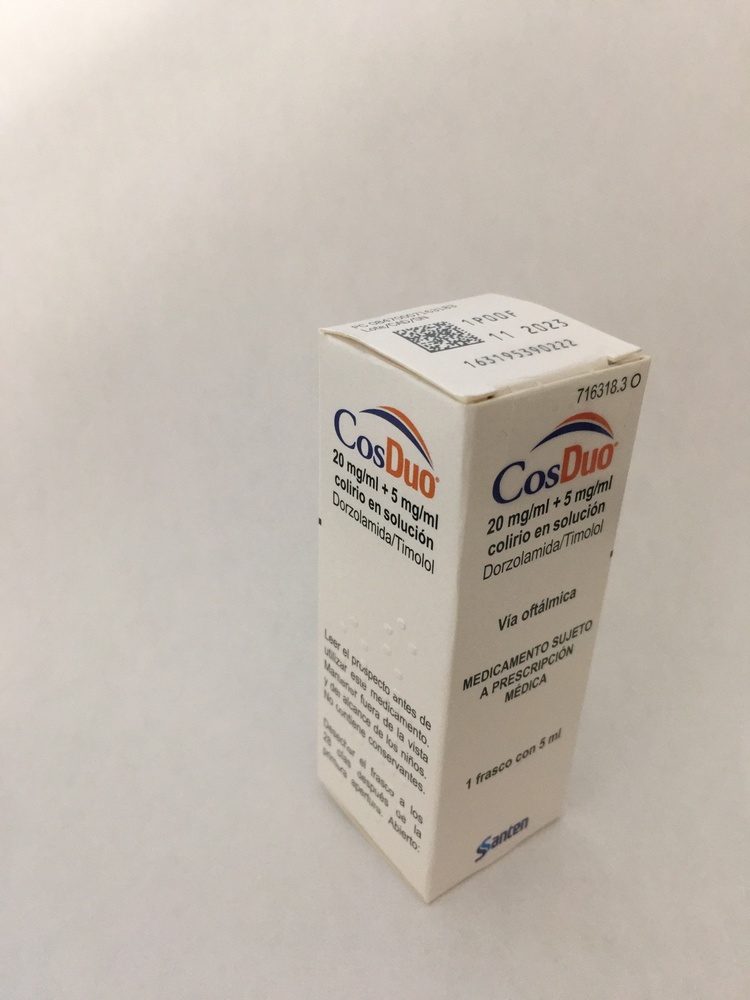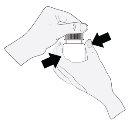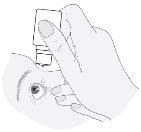

COSDUO 20 mg/mL + 5 mg/mL Eye Drops Solution

Ask a doctor about a prescription for COSDUO 20 mg/mL + 5 mg/mL Eye Drops Solution

How to use COSDUO 20 mg/mL + 5 mg/mL Eye Drops Solution
Introduction
Package Leaflet: Information for the User
Cosduo 20 mg/ml + 5 mg/ml eye drops, solution
dorzolamida/timolol
Read this package leaflet carefully before you start using this medicine because it contains important information for you.
- Keep this package leaflet, you may need to read it again.
- If you have any further questions, ask your doctor or pharmacist.
- This medicine has been prescribed for you only. Do not pass it on to others. It may harm them, even if their signs of illness are the same as yours.
- If you get any side effects, talk to your doctor or pharmacist. This includes any possible side effects not listed in this leaflet. See section 4.
Contents of the package leaflet
- What is Cosduo and what is it used for
- What you need to know before you use Cosduo
- How to use Cosduo
- Possible side effects
- Storage of Cosduo
- Package contents and further information
1. What is Cosduo and what is it used for
Cosduo contains two active substances: dorzolamida and timolol.
- Dorzolamida belongs to a group of medicines called “carbonic anhydrase inhibitors”.
- Timolol belongs to a group of medicines called “beta-blockers”.
These medicines reduce eye pressure in different ways.
Cosduo is prescribed to reduce pressure in the eye in the treatment of glaucoma when the use of a beta-blocker eye drop on its own is not appropriate.
Cosduo eye drops, solution is a sterile solution that does not contain preservatives.
2. What you need to know before you use Cosduo
Do not use Cosduo
- if you are allergic to dorzolamida, timolol or any of the other ingredients of this medicine (listed in section 6);
- if you have now or have had in the past respiratory problems, such as asthma or severe chronic obstructive pulmonary disease (severe lung disease that may cause wheezing, difficulty breathing and/or prolonged coughing);
- if you have a slow heart rate, heart failure or irregular heart rhythms (irregular heartbeats);
- if you suffer from severe kidney disease or kidney stone problems;
- if you have excess acidity of the blood caused by an accumulation of chlorides in the blood (hyperchloremic acidosis).
If you are not sure if you should use this medicine, consult your doctor or pharmacist.
Warnings and precautions
Consult your doctor or pharmacist before you start using Cosduo.
Tell your doctor about any current or past medical or eye problems, such as:
- coronary heart disease (symptoms may include chest pain or tightness, difficulty breathing, or shortness of breath), heart failure, low blood pressure;
- irregular heart rhythms such as decreased heart rate;
- respiratory problems, asthma or chronic obstructive pulmonary disease;
- poor circulation (such as Raynaud's disease or Raynaud's syndrome);
- diabetes, as timolol may mask signs and symptoms of low blood sugar;
- overactivity of the thyroid gland, as timolol may mask signs and symptoms.
If you have a history of contact hypersensitivity to silver, you should not use this medicine as the dispensed drops may contain traces of silver from the container.
Tell your doctor before you have surgery that you are using Dorzolamida/Timolol, as timolol may affect the effects of some medicines used during anesthesia.
Also, tell your doctor about any allergies or allergic reactions, including rash, swelling of the face, lips, tongue and/or throat that may cause difficulty breathing or swallowing.
Tell your doctor if you have muscle weakness or if you have been diagnosed with severe myasthenia.
If you develop any other eye irritation or new problems in the eyes, such as redness of the eyes or swelling of the eyelids, consult your doctor immediately.
If you suspect that Cosduo is causing an allergic reaction or hypersensitivity (e.g., skin rash, severe skin reaction, or redness and itching of the eyes), stop using this medicine and consult your doctor immediately.
Tell your doctor if you get an eye infection, if you suffer an eye injury, if you have eye surgery, or if you develop a reaction that includes new symptoms or worsening of existing ones.
When Cosduo is instilled in the eye, it may affect the whole body.
Cosduo has not been studied in patients with contact lenses. If you wear soft contact lenses, you should consult your doctor before using this medicine.
Children and adolescents
There is limited experience with the use of dorzolamida/timolol (preservative-containing formulation) in infants and children.
Use in patients with hepatic impairment
Tell your doctor if you have or have had liver problems.
Other medicines and Cosduo
Cosduo may affect or be affected by other medicines you are using, including other eye drops for the treatment of glaucoma. Tell your doctor if you are using or plan to use medicines to lower blood pressure, heart medicines, or medicines to treat diabetes. Tell your doctor or pharmacist if you are using, have recently used, or might use any other medicines, in particular:
- medicines to lower blood pressure or to treat heart diseases (such as calcium channel blockers, beta-blockers, or digoxin);
- medicines to treat irregular heart rhythms, such as calcium channel blockers, beta-blockers, or digoxin;
- another eye drop that contains beta-blockers;
- another carbonic anhydrase inhibitor, such as acetazolamide;
- monoamine oxidase inhibitors (MAOIs);
- a parasympathomimetic drug that may have been prescribed to help eliminate urine. Parasympathomimetics are also a type of medicine that is sometimes used to help restore normal bowel movements;
- narcotics, such as morphine used to treat moderate to severe pain;
- medicines to treat diabetes;
- antidepressants known as fluoxetine and paroxetine;
- a sulfonamide medicine, such as sulfamethoxazole (used to prevent the growth of bacteria);
- quinidine (used to treat heart disorders and some types of malaria).
Use in athletes: This medicine contains timolol, which may produce a positive result in doping tests.
Pregnancy and breast-feeding
If you are pregnant or breast-feeding, think you may be pregnant, or are planning to have a baby, ask your doctor or pharmacist for advice before using this medicine.
Pregnancy
Do not use Dorzolamida/Timolol if you are pregnant unless your doctor considers it necessary.
Breast-feeding
Do not use Dorzolamida/Timolol if you are breast-feeding. Timolol may pass into breast milk.
Driving and using machines
No studies on the effects on the ability to drive and use machines have been performed. There are side effects associated with dorzolamida/timolol, such as blurred vision, that may affect your ability to drive and/or operate machinery. Do not drive or operate machinery until you feel well or your vision is clear.
3. How to use Cosduo
Follow exactly the instructions of administration of this medicine given by your doctor. If you are not sure, consult your doctor or pharmacist again. The appropriate dose and duration of treatment will be established by your doctor.
The recommended doseis one drop in the affected eye(s) in the morning and in the evening.
If you are using Cosduo with another eye drop, the drops should be administered at least 10 minutes apart.
Do not change the dose of the medicine without consulting your doctor.
If you have difficulty administering the drops, seek help from a family member or caregiver.
Do not let the tip of the multidose container touch your eyes or the areas around them. It may cause damage to your eyes. The drops of the eye drop solution may be contaminated with bacteria that can cause eye infections that can lead to serious damage to the eyes, and even loss of vision. To avoid possible contamination of the container, avoid touching the tip of the container to any surface.
Instructions for use
Before dispensing the drops:
- Wash your hands before opening the bottle.
- Do not use this medicine if you detect that the security seal on the neck of the bottle is broken before the first opening.
- When using it for the first time, before dispensing a drop in the eye, you must practice using the dropper by slowly dispensing a drop outside the eye.
- When you are sure you can dispense one drop at a time, you should place yourself in the most comfortable position to dispense the drops (you can sit, lie down, or stand in front of a mirror).
Dispensing:
- Hold the bottle directly under the cap and unscrew the cap to open the bottle, do not touch anything with the tip of the bottle to avoid contaminating the solution.

- Tilt your head back and hold the bottle above your eye.
- Separate the lower eyelid and look up. Gently press the bottle in the middle and a drop should be dispensed in the eye. Note that it may take a few seconds from when you press until the drop comes out. The bottle should not be pressed too hard.
If you are not sure how to use this medicine, consult your doctor, pharmacist, or nurse.

- Blink a few times to spread the drop over the eye.

- After using Cosduo, close your eye and press the inner corner of your eye with your finger for about two minutes. This helps prevent the medicine from reaching the rest of the body.

- Repeat instructions 2 – 5 to dispense drops in the other eye if your doctor has indicated it. In some cases, treatment is only needed in one eye, and your doctor will inform you if this applies to you and which eye needs treatment.
- After each use and before closing it, the bottle must be shaken once downward, without touching the tip of the dropper, in order to eliminate any residual liquid in the tip. This is necessary to ensure the dispensing of the following drops.

- At the end of the 28-day period of validity of this medicine, there will be remaining Cosduo in the bottle. Do not use the excess medicine that remains in the bottle once you have completed the treatment. Do not use the eye drops after 28 days of opening the bottle for the first time.
If you use more Cosduo than you should
If you apply too many drops in the eye or swallow some of the contents of the bottle, among other effects, you may feel dizziness, have difficulty breathing, or notice that your heart beats more slowly. Contact your doctor immediately.
In case of overdose or accidental ingestion, consult your doctor or pharmacist immediately or call the Toxicology Information Service, telephone 91 562 04 20, indicating the medicine and the amount ingested.
If you forget to use Cosduo
It is important to administer this medicine as your doctor has indicated.
If you forget to apply a dose, you should administer it as soon as possible. However, if it is almost time for the next dose, do not administer the missed dose and continue with the scheduled dose program as usual.
Do not take a double dose to make up for missed doses.
If you stop using Cosduo
If you want to stop using this medicine, consult your doctor first.
If you have any further questions about the use of this medicine, ask your doctor or pharmacist.
4. Possible Adverse Effects
Like all medicines, this medicine can cause adverse effects, although not all people suffer from them.
Severe adverse effects:
If you experience any of the following adverse effects, stop using this medicine and seek immediate medical help, as these may be signs of an allergic reaction to the medicine.
Generalized allergic reactions may occur, including swelling under the skin in areas such as the face and extremities, and may obstruct the airways, causing difficulty swallowing or breathing, hives or rash with itching, generalized and localized rash, itching, severe sudden allergic reaction that can be fatal.
Generally, you can continue using the drops, unless the effects are severe. If you are concerned, consult your doctor or pharmacist. Do not stop using Cosduo without talking to your doctor.
The following adverse reactions have been reported with dorzolamida/timolol or with one of its components during clinical trials or during post-marketing experience:
Very Common(may affect more than 1 in 10 people)
- Burning and stinging in the eyes
- Alteration of taste
Common(may affect up to 1 in 10 people)
- Redness in and around the eye(s)
- Tearing or itching in the eye(s)
- Corneal erosion (damage to the front layer of the eyeball), inflammation and/or irritation in and around the eye(s)
- Sensation of having something in the eye
- Decreased sensitivity of the cornea (not appreciating that something is in the eye and not feeling pain)
- Eye pain
- Dry eyes
- Blurred vision
- Headache
- Sinusitis (feeling of tension or congestion in the nose)
- Nausea
- Weakness/fatigue and fatigue
Uncommon(may affect up to 1 in 100 people)
- Dizziness
- Depression
- Iritis (inflammation of the iris)
- Visual disturbances including changes in refraction (in some cases due to the suppression of miotic therapy)
- Decreased heart rate
- Fainting
- Difficulty breathing
- Indigestion
- Kidney stones
Rare(may affect up to 1 in 1,000 people)
- Systemic lupus erythematosus (an immune disease that can cause inflammation of the internal organs)
- Tingling or numbness of the hands or feet
- Insomnia
- Nightmares
- Memory loss
- An increase in signs and symptoms of myasthenia gravis (muscular disorder)
- Decreased sexual desire
- Stroke
- Transient myopia that resolves when therapy is stopped
- Detachment of the layer under the retina that contains blood vessels after filtration surgery, which can cause visual disturbances
- Ptosis (causing the eye to remain half-closed)
- Double vision
- Crusts on the eyelid
- Corneal edema (with symptoms of visual disturbances)
- Low eye pressure
- Tinnitus (ringing in the ears)
- Low blood pressure
- Changes in heart rate or speed
- Congestive heart failure (heart disease with shortness of breath and swelling of feet and legs due to fluid accumulation)
- Edema (fluid accumulation)
- Cerebral ischemia (reduced blood flow to the brain)
- Chest pain
- Strong heartbeats that can be rapid or irregular (palpitations)
- Heart attack
- Raynaud's phenomenon, swollen or cold hands and feet, and decreased circulation in the arms and legs
- Leg cramps and/or leg pain when walking (claudication)
- Difficulty breathing
- Respiratory failure
- Rhinitis
- Nosebleeds
- Constriction of the airways in the lungs
- Cough
- Irritation of the throat
- Dry mouth
- Diarrhea
- Contact dermatitis
- Hair loss
- Psoriasiform rash (rash with a silvery-white appearance)
- Peyronie's disease (which can cause curvature of the penis)
- Allergic reactions such as skin rash, hives, itching, in rare cases possible swelling of the lips, eyes, and mouth, wheezing, or severe skin reactions (Stevens-Johnson syndrome, toxic epidermal necrolysis).
Like other eye medicines, timolol is absorbed into the bloodstream. This can cause side effects similar to those seen with oral beta-blockers. The incidence of adverse effects after topical ophthalmic administration is lower than when, for example, medicines are administered orally or by injection. The following adverse effects were observed with beta-blockers for the treatment of eye disorders:
Unknown(frequency cannot be estimated from available data)
- Low blood sugar levels
- Heart failure
- A type of heart rhythm disorder
- Abdominal pain
- Vomiting
- Muscle pain not caused by exercise
- Sexual dysfunction
- Hallucinations
- Feeling of a foreign body in the eye (feeling of having something in the eye)
- Increased heart rate
- Increased blood pressure
Reporting of Adverse Effects
If you experience any type of adverse effect, consult your doctor or pharmacist, even if it is a possible adverse effect that is not listed in this leaflet. You can also report them directly through the Spanish Pharmacovigilance System for Human Use Medicines: https://www.notificaram.es. By reporting adverse effects, you can contribute to providing more information on the safety of this medicine.
5. Storage of Cosduo
Keep this medicine out of sight and reach of children.
Do not store above 30°C.
After the first opening, the product must be stored for a maximum of 28 days. No special storage conditions are required.
Do not use this medicine after the expiration date shown on the carton and on the bottle after "EXP". The expiration date is the last day of the month indicated. Keep the container perfectly closed.
Do not use this medicine if you notice that the seal is broken the first time you use the container.
Medicines should not be disposed of through wastewater or household waste. Deposit the containers and medicines you no longer need at the SIGRE Point in the pharmacy. In case of doubt, ask your pharmacist how to dispose of the containers and medicines you no longer need. This will help protect the environment.
6. Package Contents and Additional Information
Cosduo Composition
- The active ingredients are dorzolamida and timolol. Each ml contains 20 mg of dorzolamida (as dorzolamida hydrochloride) and 5 mg of timolol (as timolol maleate).
- The other ingredients are hydroxyethyl cellulose, mannitol, sodium citrate, sodium hydroxide, and water for injectable preparations.
Appearance of the Product and Package Contents
Cosduo eye drops in solution are presented as a 5 ml viscous, clear, practically colorless solution, in a 11 ml white opaque LDPE bottle with a white Novelia nozzle (HDPE and silicone) and a white HDPE cap.
Package sizes: 1, 2, 3, 4, or 6 bottles per carton.
Only some package sizes may be marketed.
Marketing Authorization Holder and Manufacturer
Marketing Authorization Holder
Santen Oy
Niittyhaankatu 20
33720 Tampere
Finland
Manufacturer
Pharmathen S.A.
6, Dervenakion Str.
15351 Pallini Attikis
Greece
Excelvision
27 st. La Lombardière, ZI La Lombardière
07100 – Annonay
France
Santen Oy
Kelloportinkatu 1
33100 Tampere
Finland
You can request more information about this medicine by contacting the local representative of the marketing authorization holder:
Santen Pharmaceutical Spain S.L.
Acanto, 22, 7º
28045 Madrid, Spain
Date of the last revision of this leaflet:January 2023.
Detailed and updated information on this medicine is available on the website of the Spanish Agency for Medicines and Health Products (AEMPS) http://www.aemps.es/

How much does COSDUO 20 mg/mL + 5 mg/mL Eye Drops Solution cost in Spain ( 2025)?
The average price of COSDUO 20 mg/mL + 5 mg/mL Eye Drops Solution in December, 2025 is around 12.11 EUR. Prices may vary depending on the region, pharmacy, and whether a prescription is required. Always check with a local pharmacy or online source for the most accurate information.
- Country of registration
- Average pharmacy price12.11 EUR
- Availability in pharmaciesSupply issue reported
- Active substance
- Prescription requiredYes
- Manufacturer
- This information is for reference only and does not constitute medical advice. Always consult a licensed doctor before taking any medication. Oladoctor is not responsible for medical decisions based on this content.
- Alternatives to COSDUO 20 mg/mL + 5 mg/mL Eye Drops SolutionDosage form: EYEDROP, 10 mg/ml + 5 mg/mlActive substance: timolol, combinationsManufacturer: Novartis Europharm LimitedPrescription requiredDosage form: EYEDROP, 0.3 mg/ml + 5 mg/mlActive substance: timolol, combinationsManufacturer: Brill Pharma S.L.Prescription requiredDosage form: EYE DROP, 0.3 mg/ml + 5 mg/mlActive substance: timolol, combinationsManufacturer: Laboratorio Stada S.L.Prescription required
Alternatives to COSDUO 20 mg/mL + 5 mg/mL Eye Drops Solution in other countries
The best alternatives with the same active ingredient and therapeutic effect.
Alternative to COSDUO 20 mg/mL + 5 mg/mL Eye Drops Solution in Poland
Alternative to COSDUO 20 mg/mL + 5 mg/mL Eye Drops Solution in Ukraine
Online doctors for COSDUO 20 mg/mL + 5 mg/mL Eye Drops Solution
Discuss dosage, side effects, interactions, contraindications, and prescription renewal for COSDUO 20 mg/mL + 5 mg/mL Eye Drops Solution – subject to medical assessment and local rules.














